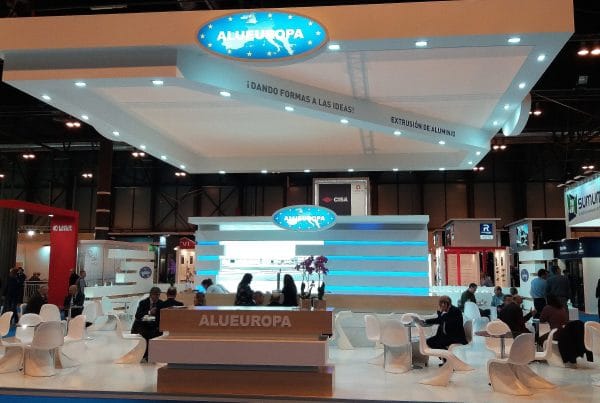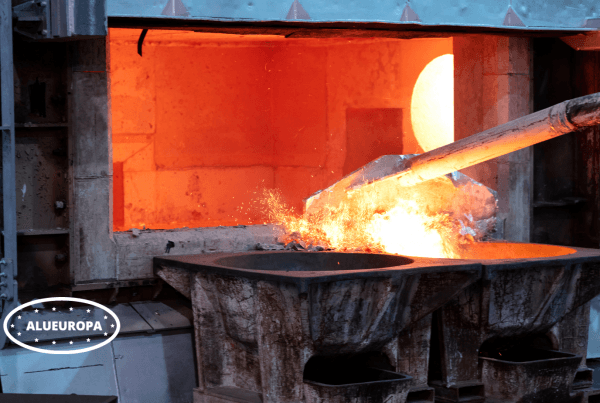The energy crisis and strong demand have boosted the price of this key material for the world economy.
Beer cans, cell phones, windows, cars, airplanes and countless other things we use every day have something in common: aluminum. This lightweight, ductile, highly conductive, corrosion-resistant and fully recyclable material has suffered like no other from the impact of the energy crisis affecting several economies. No wonder. Its production process requires an enormous amount of energy: one tonne requires four times the annual electricity consumption of an average household in Spain. As a result, its price has soared on the markets. The cost of electricity, however, has only been the icing on the cake that has further widened the gap between supply and demand, generating uncertainty about supply.

"Aluminum is in the midst of a perfect storm," says Wenyu Yao, commodities expert at ING. For, as the global economy has recovered from the blow of the health crisis, consumption of the material has soared. Recovery plans around the world, but mainly in China, Europe and the U.S., have stoked demand, which is expected to grow by 10.2% at the close of this year, after falling 2.1% in 2020, according to Bank of America figures. Sectors such as construction, transportation, food, packaging, electronics and recently those related to green energy are already gobbling up much more aluminum than in 2019. But supply has not reacted in kind. Beijing is in the eye of the storm.
The Asian giant, with 60% of global aluminum production, has been going through an unprecedented energy crisis. On the one hand, the government has restricted the electricity consumption of large consumers, such as metallurgy. Its aim is to reduce pollutant emissions. On the other hand, the price of thermal coal (the source of almost 70% of the country's electricity) has soared due to a variety of factors: from production cuts (due to the closure of mines due to lack of safety and corruption cases) to the Chinese ban on buying raw material from Australia (because Canberra insisted in 2020 on investigating the origin of the pandemic). The instability brought about by the coup d'état in Guinea Conakry, the world's second largest producer of bauxite, the natural material from which aluminum is extracted, and China's main supplier, has also taken its toll.
Following this gale, aluminum futures reached their highest level in 13 years on October 18: 3,180 dollars per ton (about 2,800 euros at the current exchange rate). Today, the quotation (on the reference market, the London Metal Exchange) is between 2,500 and 2,600 dollars. The Chinese authorities have intervened in the local coal market by boosting coal production. "And immediately the cost of the metal reacted downward," details Charlie Robertson, chief economist at Renaissance Capital, an investment bank focused on emerging markets. "There is enough supply..., at least for the time being," says Daniel Briesemann, commodities expert at Commerzbank, a German bank. The outlook is not rosy. In addition to energy costs, there is a shortage of magnesium, which is essential for aluminum alloys. The magnesium industry, which has also been hit by the energy shortages, is controlled by China with 87% of world production.
Inventories in decline
And adding to this scenario is the fact that aluminum inventories are emptying. They are currently at their lowest level since 2005. All this suggests that the world will have a global deficit of this material by 2022, according to Fastmarkets MB Research, a mining consultancy. "We're looking at the deepest deficit in the global market in at least 20 years," Duncan Hobbs, a specialist at Concord Resources, told Bloomberg.
China will cut around 7% of its annual aluminum production capacity this year due to the energy impasse, according to Wood Mackenzie estimates. This will impact cost. "Metal prices will have an upside in the coming months and will remain at historically high levels," warns Ross Strachan, analyst at CRU. And Europe is not on the sidelines in this story. Fifty percent of the region's aluminum needs are met through imports, where China is the main seller, according to the latest data from European Aluminium, an association that brings together some 80 European producers.
The rest of the aluminum gobbling up Europe comes from recycling and production, which has also entered a crisis in the face of rising energy prices in the region. This is happening while demand continues unstoppable. At the end of the year, consumption of the material in Europe will increase by 11%, compared to 7.2% in China and 6.8% in North America, according to Fastmarkets. "And it will continue to rise due to the boost it is giving to renewables," explains Armando Mateos, president of the Spanish Aluminum Association. The innards of wind turbines, solar panels and electric vehicles are full of minerals.
A large consumer of electricity
Aluminum is the third most common element on Earth. Only oxygen and silicon exist in greater quantities. After iron (used to create steel), aluminum is the metal produced in the greatest volume worldwide. According to Bloomberg, if all the alloy's production worldwide were counted as a country, it would be the fifth largest annual consumer of electricity on the planet with more than 900 million megawatts. The International Energy Agency (IEA) estimates that 59% of the energy used to bring this metal to life comes from carb''on.
Via. ElPais



